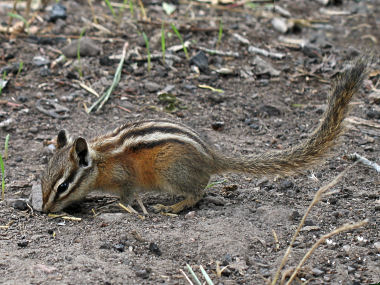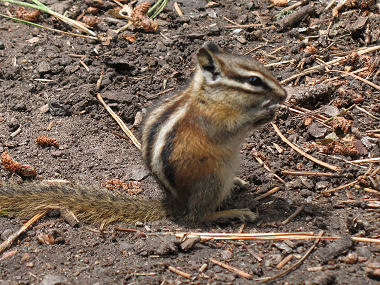Chipmunks live in a variety of habitats
including: pastures, piney woods, rocky cliffs, and sagebrush deserts;
often abundant in open coniferous forests. Chipmunks are quite vocal.
People walking in the woods do not always realize that they are
 hearing
chipmunks, since some of the cries that chipmunks make sound like bird
chirps. hearing
chipmunks, since some of the cries that chipmunks make sound like bird
chirps.
|
Don't feed the wildlife or it may
turn into a little moocher like this one. |
Most chipmunk live in burrows and gather food on the
ground, generally in areas where there are enough rocks, bushes, fallen
logs, and piles of brush to shelter them from predators as they scamper
about. Acorns, seeds, fruits, berries, and grasses are its main foods,
but it also eats fungi, invertebrates, and (rarely) small vertebrates.
It uses large cheek pouches to carry food back to its nest. Most
chipmunks construct tunnels and chambers in the ground that have
entrances that are well hidden under rocks or tangled bushes. Chipmunks
mate in the spring and have a gestation period of about 31 days. They
give birth to a litter of 2-7 (usually 5 or 6) young in May. A second
litter sometimes follows. The young remain with the mother for several
months until they are old enough to survive on their own. Chipmunks are
preyed upon by a number of other animals including hawks, weasels,
coyotes, foxes, and snakes.
 |

